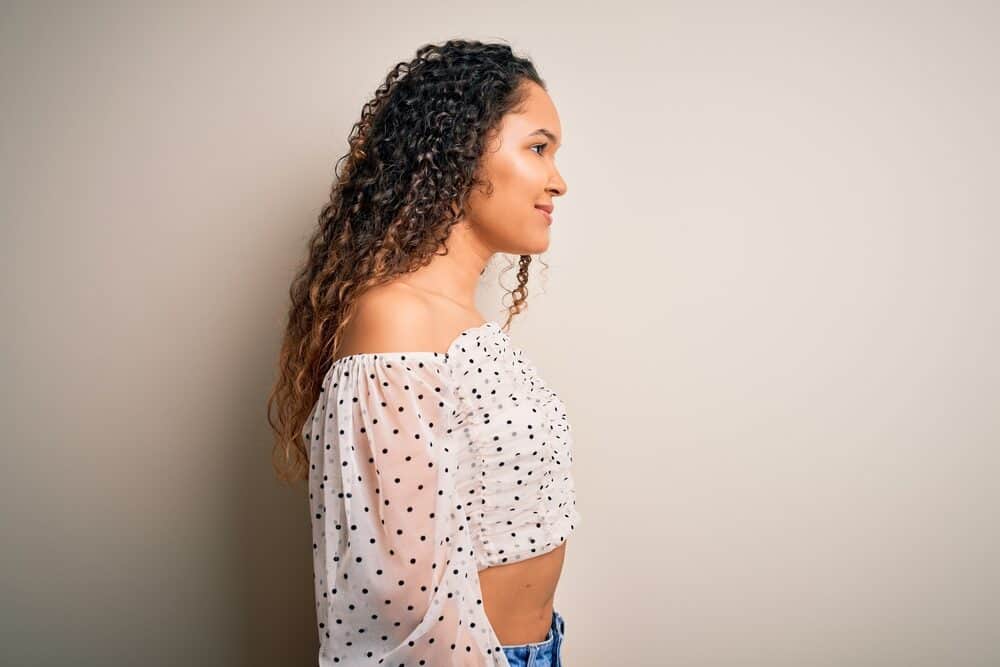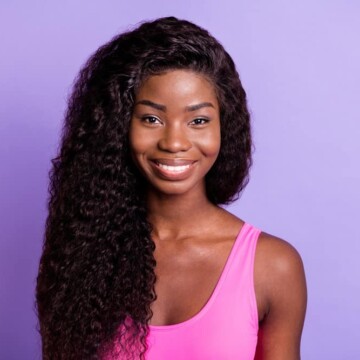
Getting regular trims is an integral part of any healthy natural hair care routine. If you’re wondering what trims are and when you need them, you’re in luck! In this article, we’re going to dive into everything you need to know about hair trims.
Table of Contents
What Is a Trim Haircut?
To most stylists, a trim is when you cut the ends of someone’s hair to remove frayed ends and damage. Typically, a trim removes a quarter to half-an-inch from your ends, although it can be more depending on the amount of damage you have.

Trim vs. Haircut: The Differences
Although both trims and haircuts involve cutting your hair, there are some differences between the two. Haircuts change the style and shape of your hair.
On the other hand, if you're getting a trim it doesn't change the shape or style of your hair; they just make it shorter. Haircuts are usually done for styling reasons, while trims maintain the health of your hair.
Signs You Need a Trim

If you’ve been experiencing an increasing amount of hair troubles, there’s a chance it's your hair giving you a sign. Breakage won't stop on its own.
It will continue moving up the strand and increase the amount of hair you’ll need to get cut off in the future. Addressing damage early will stop it before it has a chance to get worse. If you notice any of the following signs, consider booking a trim right away.
Split Ends
Split ends occur when the ends of your hair become dry and start to fray. A single strand will unravel at the ends and split into multiple parts.
Split ends can even cause an entire strand to come apart. Unfortunately, split ends can’t be repaired. To successfully remove them, you have to cut them off.
If you want to avoid split ends, here are a few tips.
- Avoid high heat styling. Heat “cooks” the protein in your hair and leads to damage. If you do use heat, make sure you always use a heat protectant and follow up with plenty of deep conditioning treatments.
- Don’t overwash your hair. Washing your hair too often can lead to excessive dryness and breakage. Only wash your hair when it’s absolutely necessary, once or twice a week. Don't use a shampoo that’s too harsh and avoid letting it sit on your hair for too long.
- Wear protective styles. Putting your hair in a protective style can give it a much-needed break from the wear and tear of daily styling. Protective styles can also help your fragile ends retain moisture.
- Cover your hair at night. Cotton pillowcases suck moisture from your strands and cause friction that leads to breakage. Sleeping with a silk or satin scarf/pillowcase can help keep the moisture where it needs to be - in your hair.
- Moisturize often. Keeping your hair moisturized is the most effective way to prevent breakage. It keeps your hair strong enough to hold up to daily stressors like styling and environmental damage.

Flat, Limp Hair
Damaged hair is weak and doesn’t hold volume as well as healthy hair. If you notice your hair isn’t as voluminous as it used to be, this may be a sign of damage. Cutting off the damage will restore the body to your locks and make your hair more manageable.
Single Strand Knots
Single strand knots, or fairy knots, occur when a single strand of hair loops around on itself and creates a small knot. Single strand knots are more common in curlier hair textures. These knots are impossible to undo and have to be cut off.
Tapering Ends
Healthy hair should be the same thickness from root to end. If you braid your hair, and the ends are dramatically thinner than the mid-lengths, this can be a sign of severe damage. Ideally, you should trim the portion where your hair begins to lose density.

You Don’t Remember When Your Last Trim Was
Trimming your hair regularly is a preventative measure. Even if your ends look fine, getting regular trims will keep it healthy in the long run. Take note of when you get your hair trimmed so you can make sure you’re getting them regularly enough.
Signs You Need More Than A Trim
Extreme damage can require a more substantial cut. In order to know when it’s time, you need to know how to recognize the signs. We’ll look into them below.
Your Ends Are See-Through
If the ends of your hair are wispy and thin, it’s probably the result of breakage. Your ends are more fragile than your roots, so they are often the first part of your hair to show signs of damage.
Split ends can travel upwards and create split strands and leave you with transparent ends. You can prevent that with a substantial trim and attentive hair care.

Your Hair Takes a Lot Longer to Detangle
Detangling curly hair can be time-consuming. However, if you notice you’re spending more and more time detangling your curls, that can be a sign of significant damage.
Damaged hair has a raised, rough cuticle that grabs onto other strands and creates more friction than closed, smooth cuticles. In addition, single-strand knots can trap other strands and form a larger knot.
Your Hair Is Stuck at One Length
If it feels like your hair never gets longer, you might start to think it's stopped growing. The good news is that your hair is probably still growing.
The bad news is that it could be breaking off as fast as it grows. Although it feels counterintuitive, cutting off the damage might just be what you need to finally reach your hair length goals.
How Often to Get a Trim

Looking at the state of your ends is one way to know if it's time for a trim. If you are seeing more and more split ends as time goes on, it’s time to break out the scissors. On average, you should trim your hair every 3 to 4 months.
How often you should get a trim largely depends on the condition of your hair. If your hair routine leads to a lot of damage, you’ll have to get them more often. If your hair routine is gentle and protective, you can go longer between trims.
Here are a few factors that can affect how often you’ll need a hair trim, as well as some ways you can combat them.
- How you style your hair. The more you manipulate and style your hair, the more damage you're doing. Use wide-tooth combs and be careful with how your brush your hair. Avoid hairstyles that are too tight or cause a lot of friction. Fabric accessories, like bandanas or hats, can also suck moisture from your strands and lead to more breakage.
- What products you use. Trims remove damaged ends. By using products that fight damage, you can extend the amount of time between trims. Use protein treatments, deep conditioners, and lots of moisture-boosting products to help keep your ends healthy.
- How often you use heat. If you regularly use heat tools like curling wands, blow dryers, and flat irons, you’ll likely need to trim your hair more often. Heat damages hair from the inside out and causes moisture loss and split ends.
- How often you get chemical treatments. Chemical processing, like bleaching or relaxing, wreaks havoc on your curls. If you’re getting chemical treatments often, you’ll probably need more frequent trims to combat the damage. Professionals are trained in the best ways to use these caustic chemicals. So, getting your hair professionally colored, bleached, or relaxed can help mitigate some of the damage.

- How to Do a Deva Cut on Yourself
- How to Prepare for Rezo Cut
- How to Fix a Bad Layered Haircut Yourself
- Should You Wash Your Hair the Day Before a Haircut?
Not everyone likes getting their hair trimmed, especially if they’re trying to grow out their hair. However, trims are necessary for anyone who wants to achieve their hair length goals.
We hope this article has helped you understand what trims are, how they can help your hair, and how often you should get them. Good luck!




